#Guillermo Tolentino
Explore tagged Tumblr posts
Text

© Paolo Dala
Oblation Guillermo Tolentino (1935) University of the Philippines (Los Baños, Laguna, Philippines)
New Look UPLB Oble
I saw the UPLB's Oblation's new look when I visited my alma mater this year to serve as a thesis panelist... and I like the new O-park.
#Guillermo Tolentino#Oblation#Art#Sculpture#Park#School#University#University of the Philippines Los Baños#Los Baños#Laguna#Philippines
1 note
·
View note
Text
National Artists in the Philippines
The Order of National Artists of the Philippines is an order bestowed by the Philippines on Filipinos who have made significant contributions to the development of Philippine art. Members of the Order are known as National Artists. Originally instituted as an Award, it was elevated to the status of an order in 2003.
List of Philippine National Artists:
Fernando Amorsolo
Carlos “Botong” Francisco
Guillermo Tolentino
Napoleon Abueva
Victorio Edades
Vicente Manansala
Cesar Legaspi
Fernando Amorsolo y Cueto (May 30, 1892 – April 24, 1972)
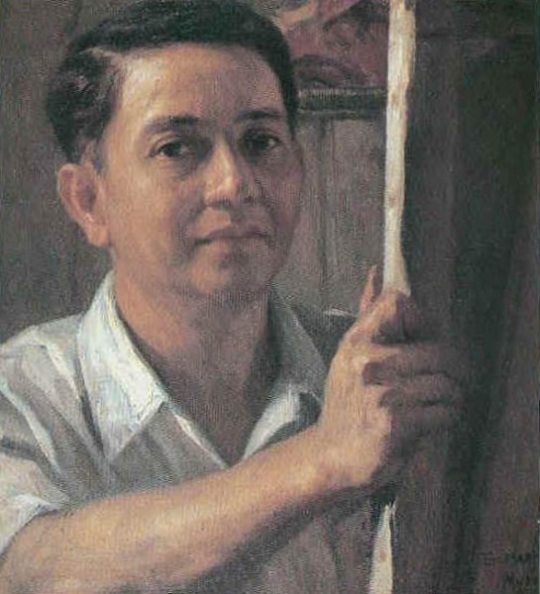
Was a portraitist and painter of rural Philippine landscapes. Nicknamed the "Grand Old Man of Philippine Art, he was the first-ever to be recognized as a National Artist of the Philippines. He was recognized as such for his "pioneering use of impressionistic technique" as well as his skill in the use of lighting and backlighting in his paintings, "significant not only in the development of Philippine art but also in the formation of Filipino notions of self and identity.
Fernando Amorsolo painted and sketched more than ten thousand pieces over his lifetime using natural and backlighting techniques. His most known works are of the dalagang Filipina, landscapes of his Filipino homeland, portraits and WWII war scenes.
Amorsolo used natural light in his paintings and developed the backlighting technique, Chiaroscuro, which became his artistic trademark and his greatest contribution to Philippine painting.
Artwork of Fernando Amorsolo
Mango pickers, oil on Canvas.

Carlos Modesto "Botong" Villaluz Francisco (November 4, 1912 – March 31, 1969)

Botong is the poet of Agono whose eye for structure, choice of color, and folk values are so distinct in his art.
Carlos Modesto Villaluz Francisco, popularly known as Botong, was a muralist from Angono, Rizal. He was a distinguished for mural painting for many decades and best known for his historical pieces.
Francisco was a most distinguished practitioner of mural painting for many decades and best known for his historical pieces. He was one of the first Filipino modernists along with Galo Ocampo and Victorio C. Edades who broke away from Fernando Amorsolo's romanticism of Philippine scenes.
Artwork of Carlos "Botong" Francisco
Cry of Balintawak.

Guillermo Estrella Tolentino (July 24, 1890 – July 12, 1976)
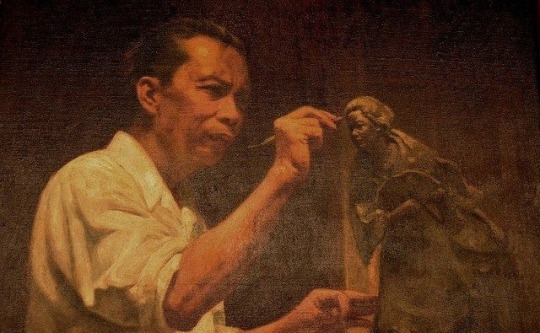
This artist well-known UP School of Fine Arts professor. He brought The Bonifacio Monument into life. He also designed the gold and bronze medals for the Ramon Magsaysay Award and did the seal of the Republic of the Philippines.
Besides monuments, Tolentino made smaller sculptures, which are now located in the National Museum of Fine Arts and busts of heroes at the Malacañang Palace. He also designed the medals of the Ramon Magsaysay Award and the seal of the Republic of the Philippines.
In 1970, he was also conferred the President's Medal of Merit for contributions to nation building through his outstanding work in arts particularly in sculpture. Tolentino also received the Republic Cultural Heritage Award in 1967 for his contribution in preserving, developing, and enriching the Filipino culture.
Artwork of Guillermo Tolentino
The Bonifacio Monument in Caloocan.

Napoleon "Billy" Veloso Abueva (January 26, 1930 – February 16, 2018)

Napoleon "Billy" Veloso Abueva, more popularly known as Napoleon Abueva, is a Filipino artist. He is a sculptor given the distinction as the Philippines National Artist for Sculpture. He is also entitled as the “Father of Modern Philippine Sculpture”. He is the first and only Boholano given the distinction as National Artist of the Philippines in the field of Visual Arts.
He is not only the Father of Modern Philippine Sculpture but also is the youngest recipient of this award. He also used many forms of materials in his craft.
Abueva helped shape the local sculpture scene to what it is now. He used almost all kinds of materials for his sculptures such as hard wood, adobe, metal, stainless steel, cement, marble, bronze, iron, alabaster, coral and brass.
Artwork of Napoleon Abueva
The Transfiguration
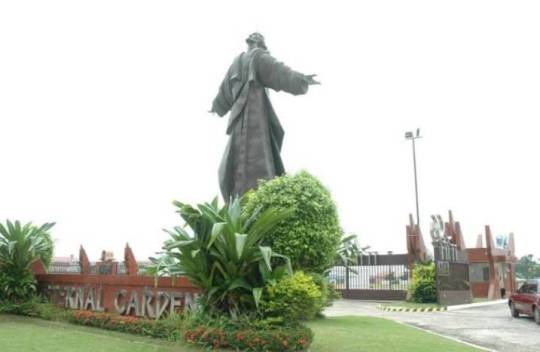
Victorio Candido Edades (December 23, 1895 – March 7, 1985)
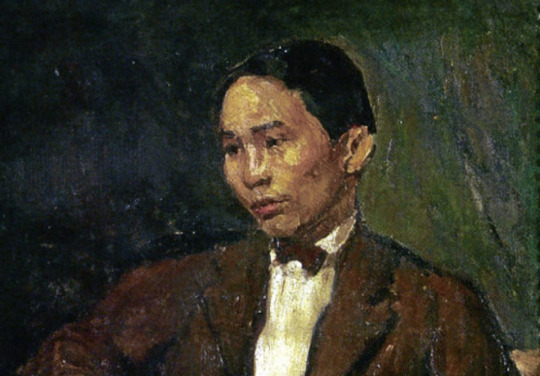
Edades is tagged as the Father of Modern Philippine Painting. He is known for his dark and subdued shades in his art pieces.
As a painter, Edades is recognized for revolutionizing the art of modern painting, thus earning for himself the title of “Father of Philippine Modern Art.” With his modernist paintings like his masterpiece, The Builders, and his tireless effort as an educator, Edades was declared a National Artist for Visual Arts in 1976. His legacy to Philippine art is a valuable contribution to the continuing evolution of the country’s culture.
His masterpiece, "The Builders," was characterized by strong composition and dark colors. Edades introduced modern art to the Philippines when it was still largely a conservative society. The public was not ready to appreciate his works, and not one of his paintings was sold.
Artwork of Victorio Edades
The Builders

2 notes
·
View notes
Text
Pose like the figure in the artwork.

La Grita (The Cry) by Guillermo E. Tolentino - Undated; circa 1954
As I wandered through the museum, my gaze was instantly drawn to "The Cry," a sculpture of a man’s head frozen in a moment of raw emotion. The expression—a deep frown paired with a mouth wide open in a silent shout—definitely piqued my interest when I passed by it. As someone who finds sculptures fascinating (there's just something in the process of their creation and their form as an artwork), I love how this piece caught my eye. It was definitely just a fun thing to imitate the man's face though.
0 notes
Text
The University of the Philippines College of Fine Arts (CFA), where the College of Veterinary Medicine (CVM) used to be (CVM gradually moved to UP Los Baños in June 1983). CFA is the country's oldest educational institution in design and the arts. Its origins preceded the foundation of the university, dating back to the early 19th century when the Academia de Dibujo y Pintura, the country's first art school, was established on 8 October 1823, in Binondo, Manila, by Damian Domingo with the assistance of La Sociedad Económica de Amigos del Pais. Although it was temporarily closed in 1834, the Spanish government revived it in 1845 with the patronage of Queen Isabela II.
The reestablished Academia welcomed Spanish art professors who introduced European Classical art traditions. Notable artists like Simon Flores and Juan Luna emerged from this institution, later achieving international recognition. Flores garnered a silver medal at the Philadelphia Universal Exposition of 1876. Luna's Spoliarium won a gold medal at the 1884 Exposición Nacional de Bellas Artes en Madrid. Earlier, in 1881, Luna's La Muerte de Cleopatra won a silver medal. By 1891, the Academia transformed into the Escuela Superior de Pintura y Grabado.
In 1908, the Philippine Assembly, during the American colonial era, passed Act No. 1870, formally establishing the University of the Philippines. Fine Arts became one of the university's original founding units alongside the Philippine General Hospital and the College of Agriculture.
Over the years, CFA has produced at least 11 National Artists for the Visual Arts: Fernando Amorsolo (Painting, 1972), Guillermo Tolentino (Sculpture, 1973), Carlos Francisco (Painting, 1973), Napoleon Abueva (Sculpture, 1976), Vicente Manansala (Painting, 1981), Cesar Legaspi (Painting, 1990), José Joya Jr. (Painting, 2003), Abdulmari Imao (Sculpture, 2006), Benedicto Cabrera (Painting, 2006), Federico Alcuaz (Painting, Sculpture, and Mixed Media, 2009), and Larry Alcala (Comics, 2018). CFA’s history not only reflects the evolution of the University of the Philippines but also mirrors transformations of Philippine art and art education in the country.
1 note
·
View note
Text
The Cheating Game (2023)
The Cheating Game (2023) #RodMarmol #JulieAnne #SanJose #RayverCruz #MartinDelRosario #YayoAguila Mehr auf:
Jahr: 2023 Genre: Drama / Romantik Regie: Rod Marmol Hauptrollen: Julie Anne, San Jose, Rayver Cruz, Martin Del Rosario, Yayo Aguila, Candy Pangilinan, Wynwyn Marquez, Thea Tolentino, Phi Palmos, Paolo Contis, Ken Celestial Cacao, Edwin Guillermo, Bernadette Anne Morales, Evan Tan … Filmbeschreibung: Hope ist eine idealistische, junge Berufstätige, die glaubt, sie könne die Welt verändern und…

View On WordPress
1 note
·
View note
Text
youtube
This can be said for many countries in Asia, but for us Filipinos, it is a true statement. The Filipino culture features great diversity in both linguistic, culinary and cultural aspects that gives each part of this country its own identity. For example, the Philippines has been home to some of the most celebrated names in art history such as Fernando Amorsolo (whose works are on display at the National Museum), Guillermo Tolentino (the famous poet) and even Agamemnon Pantaleon (the first South Asian national who opened an account while working in our country). All these may not have ventured into fashion but they all contribute to our highly recognized cultural identity which is the famous Filipiniana worn gloriously by Mrs. Imelda Marcos back in the day. Inspired by the rich heritage of the country, the Filipiniana gown has finally seen the light of day ever since the good old 1980s. This year, it seems that the local (and international) fashion scene is taking some fashion inspo from our country’s national costume. Below, you’ll see Janine Guiterrez, Vanessa Hudgens and even newly elected Vice President of the Philippines, Sara Duterte, all decked in traditional Filipiniana.
#barongtagalog#philippines#barongs#philippine culture#custommadebarongtagalog#filipinopride#madeinthephilippines#filipinoculture#filipinowedding#pinoy#Youtube
0 notes
Text
Here's what we'll miss when CCP closes in 2023.
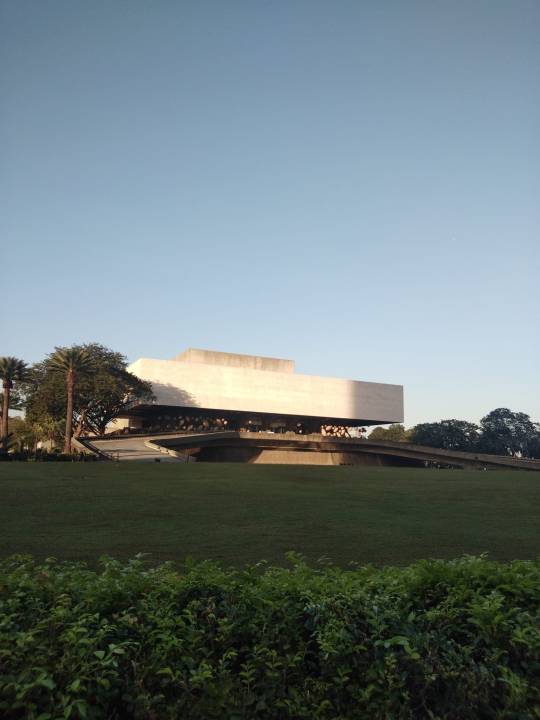
The Cultural Center of the Philippines, which has stood along Roxas Boulevard in Pasay City for 53 years to preserve and promote Filipino culture and arts, will close in January 2023 for a three-year renovation.
The CCP, designed by National Artist for Architecture, Leandro V. Locsin, houses three theaters, one audio-visual space with a changing exhibit lobby, hallways, and galleries. Great Filipino artists were honored with the names of each of these spaces.
The CCP Main Theater is named for Nicanor Abelardo, the father of Philippine Sonata. The Little Theater is named after Aurelio Tolentino, a Filipino playwright and revolutionary during Spanish and American colonization; the former Dream Theater, now the CCP Arthouse Cinema, is dedicated after National Artist for Film, Manuel Conde; and the Studio Theater is named after Huseng Batute, King of Balagtasan.
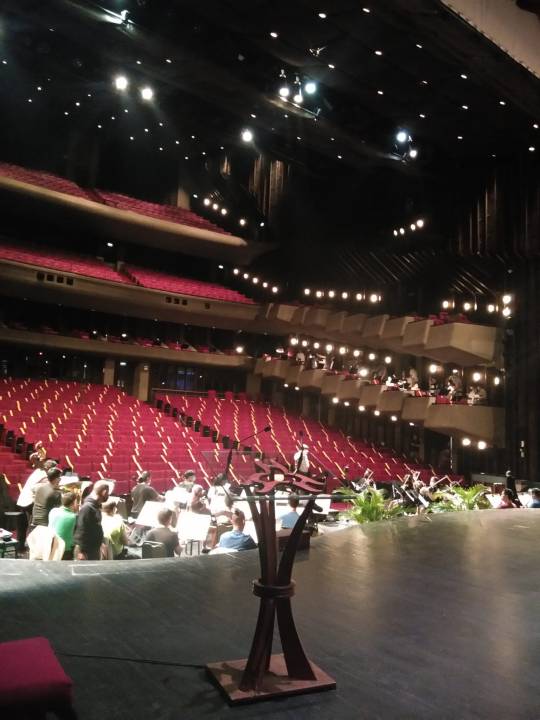
The Main Gallery is dedicated after Juan Luna, while the Small Gallery is named after Fernando Amorsolo. The Little Theater Lobby, which is also a changing exhibit space, is named after Carlos "Botong Francisco, a National Artist for Visual Arts.
Vicente Manansala, a National Artist for Visual Arts, Guillermo Tolentino, known for works such as Oblation and Andres Bonifacio Shrine, and Victorio Edades, the Father of Filipino Modern art, were also honored with hallway names.
As it is home to a variety of permanent works of art, many of which were created by National Artists, such as Vicente Manansala's Tribute to the Seven Arts, Arturo Luz's Black and White Painting and Paper Clip, Napoleon Abueva's Hilojan and Dancers, and Cesar Legaspi's Triptych, CCP might be considered as a museum.
There is no entrance fee when you visit CCP to explore on your own. You can, however, make a reservation with a tour guide for a more instructional trip.
These are just a few examples of what we can see and learn inside the institution. So, before it closes, come see the artworks and support Filipino culture.
0 notes
Text
Project Plan
Abellon, Joanna Chris
History of Filipino Arts
The term "Philippine art" refers to the works of art that have evolved and accumulated in the Philippines from the country's beginnings of civilization to the present day. It represents the wide spectrum of cultural influences on the country's culture and how these influences sharpened the country's arts for its society and non-Filipinos.
Period before colonization
Approx. 900 - approx. 1565
It's fascinating to discuss art in the pre-colonial period. Indigenous Filipinos had their own art, literature, and architecture long before colonial eyes and ears arrived. Their traditions and practices are included. Oral chants, stories, and songs, as well as written cave drawings and texts, make up their literature.
Islamic Period
1221
It began when an Arab named Sayyid Abubakar arrived in the Philippines, particularly in the province of Sulu. He primarily preached the Arabic religion in Mindanao, where it was accepted by the Maguindanaoan, Tausug, Yakan, Samal, and Badjao.
The Koran is their religion's book, and the church, which they name Mosque, is one of their most important structures. They also have a sculpture called Will Occur, which concentrates on sculpturing, molding, pottery, weaving, and patterning.
Period of Spanish Colonialism
1521- 1898
It all began when Portuguese explorer Ferdinand Magellan arrived in the Philippines. This was a time when Christianity and catholicism were very important. A variety of architectural styles were introduced, including a catholic church shaped like a Latin cross, churches with Baroque characteristics and embellishments, glass sour belts, and bahay na bato, bahay na Tisa, which became the people's principal shelter. They also focused on sculptures that included similar figures, church wall features, and carozza—which was primarily used as a support for Santos and Santas in procession.
Occupation by Americans
1898 - 1946
After gaining independence from Spain, most architecture was modernized, and cities underwent significant development during this period. Daniel Burnham was tasked with developing and designing Manila and Baguio. Perhaps because it reflects Filipino culture, Fernando Amorsolo's painting has become popular. The oblation sculpture by Guillermo Tolentino, as well as the Bonifacio monument, were both well regarded.
Occupation of Japan
1946-1969
Most of the arts that were made more than art was slowly entering the earth world in this era due to Philippine history. The triumvirate of Victorio Edades, Carlos Francisco Galo Hernandez, and Victorio Edades pioneered contemporary art. The 1970s until the present day
1970- current
Multimedia, mixed media, and transmedia were all introduced, as well as figurative and non-figurative art. Malls, real estates, condos, hotels, resorts, commercial buildings, and other modern structures were constructed.
References:
https://www.hisour.com/art-of-the-philippines-37061/
https://www.preceden.com/timelines/631577-history-of-philippine-art
7 notes
·
View notes
Photo

© Paolo Dala
Oblation Guillermo Tolentino (1935) University of the Philippines (Los Baños, Laguna, Philippines)
Love/Hate UPLB
There was a time when I completely despised the University of the Philippine Los Baños (UPLB) and Los Baños itself. I think it was during my last year [2015-2016] in UPLB. All I wanted was to get out of UPLB ASAP. And I swore to myself once I get out of that place I’ll never look back.
The last time I was in Los Baños was in 2017 when I got my diploma and transcript of records and I haven’t visited UPLB since then. I’ve stoned wall all invites, Eng’g Meets, Feb Fairs, and Homecomings, just not be in UPLB. Haha... But I was able to visit UPLB again recently. And while I was walking around the campus, I realized that I missed that place and deep inside I really love it.
#Oblation#Guillermo Tolentino#University of the Philippines#Sculpture#Art#O Park#University#Los Baños#Laguna#Philippines
0 notes
Text
“A man who really fights for justice must lead a private, not a public, life if he is to survive for even a short time.”
Entry: 006 // Literature // Title: Rizal Without the Overcoat Author: Ambeth R. Ocampo Year: 1990 (first publication)
_____
HOPELESS CRUSH
Even prior to entering my second year in college (when we have to take our mandatory Rizal course), I already have a “crush” on Rizal. If I’m not mistaken, I started to study about him for a contest that I was chosen to partake in when I was a college freshman. I was picked as a delegate for the annual National Rizal Youth Leadership Institute held in Baguio City, and I could still remember my most adored quote from Rizal, it was this:
“A life which is not dedicated to a great ideal is useless. It is a pebble lost in the field, not being part of an edifice.”
Growing up with a love for literature, I learned about Rizal’s talent and career as a writer, which fascinated me more than the fact that he was a doctor, sculptor, linguist and many more others that he was. I fell in love with his poetry and I truly believe that had I lived in the same timeline as him, I would have fallen head over heels for him. I am not even exaggerating. I would be helpless.
During this quarantine, a certain sweet friend of mine gifted me this book because she knew how much I adored Rizal and was burning my eyes by reading e-books (she also gave me my first manga, which was also about the life of Rizal – highly recommended). I credit her for the re-ignition of my love for the man, this book was able to show me the sides of Rizal that will never be talked about in classrooms, asked in examinations or written in textbooks.
FASCINATION, INFATUATION, ERUDITION
Being a Renaissance man who represented both the art and science of life, Rizal truly was salt to the earth. A huge chunk of my admiration for him was that he was a quintessential scholar. He studied every day about everything. He studied medicine, botany, interior design, art, agriculture and so much more. Somehow, a life like his is what I find ideal – the continuous pursuit of knowing. He loves his books dearly and was stingy about them – which made me realize that it’s not odd for me to be sensitive about my books. Haha. He was a bookworm and learned foreign languages to widen his education. He spoke at least five languages – Spanish, Tagalog, English, French and German. How will I be able to do that? If his sentiments weren’t so anti-clerical, he could have qualified to be the Pope with all the languages he knew. In this book, Guillermo Tolentino had a séance with the spirit of Rizal, and although we cannot prove that it truly was him – it certainly had his flavor.
The book also talked about Rizal’s popularity and how it was more of a disadvantage rather than an advantage, because he never asked to be glorified. In my opinion, one of the most remarkable detriment of his colossal popularity is that the other heroes are overshadowed. Rarely do Filipinos know that Bonifacio strived to be literate on his own, learned English because of his job and even has a beautiful handwriting. The now well-known Heneral Luna studied pharmacy, chemistry and was an active writer during his time (I find his pen name in La Solidaridad utterly adorable: “Taga-ilog”; in comparison to Rizal’s “Laong Laan” or del Pilar’s “Plaridel” that seemed as if hard thoughts were given to lol). Imagine how many more of our heroes would be admired as polymaths because of their talents? If only we gave time to study and appreciate each of them.
SI ANDRÉS O SI JOSÉ?
For as long as I could remember, Rizal could never be brought up in a conversation without Bonifacio’s name getting dragged in. It seems that a lot of people think that Bonifacio deserves the title of pambansang bayani better than Rizal because he was the one who fought the fight with flesh and blood.
Obviously, my opinion would be biased since I have a crush on Rizal. All I can say is that: they fought the fight they knew how to fight. If Rizal did not write those novels, who else would? He was an ilustrado, and was one of the few who was brave enough to write about the politics of the Philippines under the Spaniards. It was a fight he was well-equipped to fight. It was the fight he was built and trained to fight.
Another subject of dispute is that Rizal was not even well-versed in Tagalog (Filipino), he wrote the best in Spanish. Yet if you examine it closely, the irony is still present today: the book that I read was in English, the formal language in our country is English and this blog post that I’m writing is in English. Can we call him out on that without being hypocrites? The unfortunate truth is that this crevice remains open in our society. This colonial mentality still exists, just like how someone is labeled as “jologs” when she/he can speak better in Filipino than in English.
On the other hand, did Bonifacio need to write those novels? No. He did not need to – because he lived out those struggles every single day of his life in the Philippines. He was a born warrior. He fought the battles. It was the fight he knew how to fight. It was the fight he was made and meant to fight.
In my eyes, they had their own battles – both of which were within the grasp of their aptitude and proclivity.
THE TIMES OF TODAY
It’s such a shame that majority of the youth barely care for the Rizal course, often finding it taxing and tedious because it’s history. Admittedly, including me, know very little of our own national heroes and of our own history.
Filipinos admire the culture of other countries instead of our own. With K-pop, Hollywood or Anime, our (yes, I’m also a victim) eyes are set on looking on other countries - not on our own. It’s heartbreaking. For a third world country, economy is put first before arts, culture or sports. Our country has so much potential, as evident in the natural resources, creativity, culture, agriculture, tribes and so much more. If only these will be focused upon, our country will be unstoppable. I have no doubt. But we cannot work with fixing these ideals if the basic problems are still existent.
Yesterday, I watched “Heneral Luna”. Such a beautiful film (how I wish more historical Filipino films would be produced, rather than cheesy predictable ones that are made just because they make money). What I find the most disturbing is that centuries and fifteen presidents later, the same problem of Heneral Luna still exists. The country is still fighting within itself; with Filipinos still putting their own desires rather than of the country. I wonder what the La Solidaridad and Katipunan members would think of our country today.
#Rizal Without The Overcoat#Rizal#Jose Rizal#Ambeth Ocampo#Filipino History#Philippine History#makamisa
10 notes
·
View notes
Text
SINING BISWAL
Ang sining ay pinakamataas na antas ng pakikipag-ugnayan, ito ay walang katapusan at walang limitasyong larangan, na nagbibigay laya sa paghahayag ng tao sa paraang piskal, sosyal, o paguugali (VSA,2015). Ang sining ay pandaigdig na wika na may kakahayang pag-isahin ang lahat ng tao. ito ay kagalingan sa pagbuo at paggawa. Ayon sa aking nabasa, sinasakop ng Sining-biswal ang isang malawak na bahagi ng sining. Ito ay isang uri ng “art forms” tulad na lamang ng pagguhit, pagpinta, eskultura o kahit anong sining na maaaring makita, di kabilang ang sining-pagganap. May pitong elemento ang Sining Biswal ito ay, linya, valyu,liwanag at dilim (chiaroscuro),kulay, tekstura, volyum at espasyo. Mga halimbawa nito ay:
FERNANDO AMORSOLO Si Fernándo C. Amorsólo ang pinakaunang ginawaran ng karangalang Pambansang Alagad ng Sining sa Pintura noong 1972. Si Amorsolo ang pinakamaningning na kinatawan ng panahong klasiko sa sining biswal sa Filipinas. Kinikilála rin siyáng “Ang Maestro”at ��Grand Old Man” ng sining sa Filipinas noong nabubúhay pa. Siya ay tinagurian bilang unang Pambansang Alagad ng Sining ng Pilipinas. Ipinanganak siya sa Paco, Maynila noong Mayo 30, 1892 at nakatapos ng pag-aaral mula sa Paaralang Pansining ng Liseo ng Maynila noong 1909. Siya ay tanyag dahil sa mga obra niya na nagpapakita ng buhay probinsya o buhay nayon. Ipinapakita ng kanyang mga ipininta ang kapayakan ng buhay ng mga Pilipino.Kilalasiya sa kaniyang pagiging malikhain at pagkadalubhasa sa paggamit ng liwanag sa aspeto ng sining. Siya ay pumanaw sa edad walumpu noong Abril 24, 1972.
Isa sa pinakatanyag niyang likha ay ang “Planting Rice” noong 1946.
GUILLERMO TOLENTINO Siya ay isang pilipino ng at hinirang na pambansang alagad ng Sining sa larangan ng iskultura noong 1973. Nakilala siya sa kanyang obra maestrang na naglalahad ng pagiging makabayan.

Ang sining ay pinakamataas na antas ng pakikipag-ugnayan, ito ay walang katapusan at walang limitasyong larangan, na nagbibigay laya sa paghahayag ng tao sa paraang piskal, sosyal, o paguugali (VSA,2015). Ang sining ay pandaigdig na wika na may kakahayang pag-isahin ang lahat ng tao. ito ay kagalingan sa pagbuo at paggawa. Ayon sa aking nabasa, sinasakop ng Sining-biswal ang isang malawak na bahagi ng sining. Ito ay isang uri ng “art forms” tulad na lamang ng pagguhit, pagpinta, eskultura o kahit anong sining na maaaring makita, di kabilang ang sining-pagganap. May pitong elemento ang Sining Biswal ito ay, linya, valyu,liwanag at dilim (chiaroscuro),kulay, tekstura, volyum at espasyo. Mga halimbawa nito ay: Ang sining ay pinakamataas na antas ng pakikipag-ugnayan, ito ay walang katapusan at walang limitasyong larangan, na nagbibigay laya sa paghahayag ng tao sa paraang piskal, sosyal, o paguugali (VSA,2015). Ang sining ay pandaigdig na wika na may kakahayang pag-isahin ang lahat ng tao. ito ay kagalingan sa pagbuo at paggawa. Ayon sa aking nabasa, sinasakop ng Sining-biswal ang isang malawak na bahagi ng sining. Ito ay isang uri ng “art forms” tulad na lamang ng pagguhit, pagpinta, eskultura o kahit anong sining na maaaring makita, di kabilang ang sining-pagganap. May pitong elemento ang Sining Biswal ito ay, linya, valyu,liwanag at dilim (chiaroscuro),kulay, tekstura, volyum at espasyo. Mga halimbawa nito ay:
Ang sining ay pinakamataas na antas ng pakikipag-ugnayan, ito ay walang katapusan at walang limitasyong larangan, na nagbibigay laya sa paghahayag ng tao sa paraang piskal, sosyal, o paguugali (VSA,2015). Ang sining ay pandaigdig na wika na may kakahayang pag-isahin ang lahat ng tao. ito ay kagalingan sa pagbuo at paggawa. Ayon sa aking nabasa, sinasakop ng Sining-biswal ang isang malawak na bahagi ng sining. Ito ay isang uri ng “art forms” tulad na lamang ng pagguhit, pagpinta, eskultura o kahit anong sining na maaaring makita, di kabilang ang sining-pagganap. May pitong elemento ang Sining Biswal ito ay, linya, valyu,liwanag at dilim (chiaroscuro),kulay, tekstura, volyum at espasyo. Mga halimbawa nito ay: Ang sining ay pinakamataas na antas ng pakikipag-ugnayan, ito ay walang katapusan at walang limitasyong larangan, na nagbibigay laya sa paghahayag ng tao sa paraang piskal, sosyal, o paguugali (VSA,2015). Ang sining ay pandaigdig na wika na may kakahayang pag-isahin ang lahat ng tao. ito ay kagalingan sa pagbuo at paggawa. Ayon sa aking nabasa, sinasakop ng Sining-biswal ang isang malawak na bahagi ng sining. Ito ay isang uri ng “art forms” tulad na lamang ng pagguhit, pagpinta, eskultura o kahit anong sining na maaaring makita, di kabilang ang sining-pagganap. May pitong elemento ang Sining Biswal ito ay, linya, valyu,liwanag at dilim (chiaroscuro),kulay, tekstura, volyum at espasyo. Mga halimbawa nito ay: ng sining ay pinakamataas na antas ng pakikipag-ugnayan, ito ay walang katapusan at walang limitasyong larangan, na nagbibigay laya sa paghahayag ng tao sa paraang piskal, sosyal, o paguugali (VSA,2015). Ang sining ay pandaigdig na wika na may kakahayang pag-isahin ang lahat ng tao. ito ay kagalingan sa pagbuo at paggawa. Ayon sa aking nabasa, sinasakop ng Sining-biswal ang isang malawak na bahagi ng sining. Ito ay isang uri ng “art forms” tulad na lamang ng pagguhit, pagpinta, eskultura o kahit anong sining na maaaring makita, di kabilang ang sining-pagganap. May pitong elemento ang Sining Biswal ito ay, linya, valyu,liwanag at dilim (chiaroscuro),kulay, tekstura, volyum at espasyo. Mga halimbawa nito ay
2 notes
·
View notes
Text
Reading the Image: Jose Joya’s Church Silver

Church Silver
1960
Oil on canvas
178cm x 222cm
Gift of Col. Andres Soriano
Church Silver is one of the paintings housed in the Ateneo Art Gallery in the Arete. Before it was in the Arete, my father had actually seen it when he was a student in the 80s in the Old Rizal Library. The painting is the work of Jose Joya, a painter awarded as a National Artist for the Visual Arts back in 2003. Other works of his included in the Ateneo Art Gallery are Granadean Arabesque, The Visayans, and Summer in Detroit.
Jose Joya was born on June 3, 1931 and began sketching at the age of eleven. His introduction to art was Fernando Amorsolo’s work, which started his study of art. Initially learning the works of Amorsolo and Guillermo Tolentino, he gradually became influenced by American abstract work. He graduated with a Fine Arts degree from the University of the Philippines, and continued his studies in Madrid and Michigan. Throughout his career, he became involved in the Philippine Art Gallery, served as president of the Art Association of the Philippines, and as Dean of the UP College of Fine Arts wherein he modernized the curriculum.
Jose Joya’s works are known as abstract pieces inspired by bits of Filipino culture. He is known as one of the pioneers of abstract expressionism in the Philippines. What I’ve noticed from his other works are that oftentimes, they will seem as subject-less and spontaneous, only for subjects to appear once a deeper analysis and bigger picture is seen. Other works of Joya’s are described as vibrant. Church Silver in particular seems duller.
In the work Church Silver, Joya makes use of colors of blue, gray, black, and a little brown. It seems like a bunch of squares and random shapes made with solid color, but a closer look will show the colors outlined with a faint gray and black. These outlines provide the colors with a humanesque shape. The darker colors are more emphasized towards the left of center of the painting, while the outlines remain faint. It creates a crowded and disorderly look. The strong and vibrant colors in the middle give the human figures a clearer shape. The corners are more of a negative space and given less emphasis. When putting the different elements together and looking at the bigger picture, it seems that these humanesque shapes are seen to form an image of a crowd at Church.
Despite it initially seeming crowded and disorderly, the crowd seems to be facing the upper right corner of the painting. Straight diagonal lines sloping down are seen if the upper right corner is seen as the direction the crowd is facing. In churches and cathedrals, seats are arranged in pews in straight lines. I suppose the altar of the church would be located in that upper right direction.
Lines are thicker and more weighted in the area where solid color is darkest, which puts emphasis on the people in that specific area. The painting is pretty consistent in structure except for the color gradient.
A lot of my analysis of the painting comes from being a Catholic who regularly attends Church to celebrate mass . It would be difficult to see the image being presented by Joya if not for my experience of being a person sitting in one of the pews of Church.
It is difficult to find specific meanings to this painting after researching the context of Joya’s time, especially in 1960 when the painting was made. Judging from the title, silver is usually known for being second to gold, and the people in Church are a reminder for us as a community that we are second to God. Another perspective that could be made is the use of silver in the Bible as a symbol of betrayal by Judas to Jesus, meaning it could be corrupt and evil. The Church has faced numerous accusations in history of “profiting” from Churchgoers.
Another meaning that could be obtained especially from the color grading which is most apparent, is that not everyone who attends Church has a clear meaning as to why they attend Church. Their relationship with the Church is either fully formed and clear, seen in the left of center area with darker colors; or vivid and in progress, which is somewhat seen in the unfinished look to the painting and the lighter tones around the darker areas. Either way, it still provides a sense of harmony and community, which is something relatable to Churchgoers.
The painting’s providence in the Ateneo Art Gallery comes from Colonel Andres Soriano, a war hero from the Filipino-American war and a businessman with San Miguel Corporation. While it is stated what year the work was made, the year in which Soriano obtained the work and provided to the Ateneo is unclear. Soriano was a student at the Ateneo de Manila before moving on to serve in MacArthur’s troops. Perhaps he had benefited from the Ateneo in his education so much that he would like to contribute the painting to the Art Gallery. The Ateneo is a Catholic school, after all.
Overall, the painting is a familiar view to those who attend Church. It seems a bit hazy because of the faint parts of the work, showing an unclear presence to it, which is something I personally relate to as a Catholic struggling with my faith as well as paying attention in Church. However, it creates harmony and unity amidst the different colors, shapes, and darkness and clarity of color. It is not representational with clear images of humans, but the disorderly and abstractness of it all creates a mood that the personal spirituality can relate to.
Sources:
ANDRES SORIANO, INDUSTRIALIST, 66; Philippine War Hero Is Dead—Built Business Empire. (1964). Retrieved from The New York Times: https://www.nytimes.com/1964/12/31/archives/andres-soriano-industrialist-66-philippine-war-hero-is-deadbuilt.html
Biography of Jose T. Joya, Philippine National Artist (n.d.). Retrieved from https://www.geringerart.com/biography-of-jose-t-joya-philippine-national-artist/
Order of National Artists: Jose Joya. (n.d.). Retrieved from https://ncca.gov.ph/about-culture-and-arts/culture-profile/national-artists-of-the-philippines/jose-joya/
1 note
·
View note
Photo

Tirada: 50 Years of Philippine Printmaking (1968-2018)
The TIRADA exhibition celebrated the 50th anniversary of the AP: Association of Pinoyprintmakers in 2018. Presented by the CCP and AP, TIRADA: 50 Years of Philippine Printmaking featured over 170 prints from the 70s up to 2018 and was held at the Bulwagang Juan Luna (CCP Main Gallery), Pasilyo Guillermo Tolentino (3F Hallway Gallery), and Pasilyo Vicente Manansala (2F Hallway Gallery) from 19 May to 15 July 2018. Revisit this significant milestone through your screens as you may now download the digital copy of the exhibition catalog on the CCP website!
For more information, click here.
#ccp#cultural center of the philippines#ccp visual arts#ccp vamd#tirada#philippine printmaking#association of pinoyprintmakers#ap#printmaking#artPH
1 note
·
View note
Link
Jornal da Cidade Online EDITORIAIS BLOGS E COLUNAS APOIA.se DESTAQUE AGORA Empresa do Grupo Globo transferiu mais de 450 mil para empresa de Lula, segundo a PF POLÍTICA Empresa do Grupo Globo transferiu mais de 450 mil para empresa de Lula, segundo a PF ÚLTIMAS NOTÍCIAS Ano de bons resultados e recordes no governo Bolsonaro: que 2020 a esquerda continue queimando a língua GOVERNO BOLSONARO 28/12/2019 Ano de bons resultados e recordes no governo Bolsonaro: que 2020 a esquerda continue queimando a língua PCdoB, em clara tentativa de enganar o eleitor, vai “encobrir” o nome, mudar as cores e os símbolos PCDOB 28/12/2019 PCdoB, em clara tentativa de enganar o eleitor, vai “encobrir” o nome, mudar as cores e os símbolos Para o “atordoado” Bonner, lua vira “Lula”, ao vivo (veja o vídeo) REDE GLOBO 28/12/2019 Para o “atordoado” Bonner, lua vira “Lula”, ao vivo (veja o vídeo) Conheça Inema, a praia da Bahia onde Bolsonaro passa férias (veja o vídeo) TEMA LIVRE 28/12/2019 Conheça Inema, a praia da Bahia onde Bolsonaro passa férias (veja o vídeo) Traíra por todo lado: vira casacas invadem o país no final do ano REINALDO AZEVEDO 28/12/2019 Traíra por todo lado: vira casacas invadem o país no final do ano ADI contra “juiz de garantias” cai para ministro Luiz Fux: “In Fux we trust” LUIZ FUX 28/12/2019 ADI contra “juiz de garantias” cai para ministro Luiz Fux: “In Fux we trust” A depravada militância ideológica na mídia VERA MAGALHÃES 28/12/2019 A depravada militância ideológica na mídia UM NOVO BRASIL! Derrubamos um plano de poder de 3 décadas JAIR BOLSONARO 28/12/2019 UM NOVO BRASIL! Derrubamos um plano de poder de 3 décadas Carlos Vereza: Quem não sabe brincar não desce pro play, as donzelas da “porta” estão indignadas CARLOS VEREZA 27/12/2019 Carlos Vereza: Quem não sabe brincar não desce pro play, as donzelas da “porta” estão indignadas OAB é tão ruim ou pior que o Porta dos Fundos OAB 27/12/2019 OAB é tão ruim ou pior que o Porta dos Fundos DIREITO E JUSTIÇA A intrigante “selfie” do advogado de Ricardo Coutinho com o ministro Gilmar Mendes 28/12/2019 às 14:47 1434 COMPARTILHARAM ISSO O ministro Gilmar Mendes realmente se julga acima do bem e do mal e se acha absolutamente isento de qualquer suspeita. Faz o que quer e o que bem entende. Destrata e desrespeita autoridades, pisoteia na maior operação contra a corrupção da história e derrama, sobre todos os que cruzam o seu caminho, os seus instintos mais primitivos de “mistura de mal com o atraso e pitadas de psicopatia”. Relator da Operação Calvário, o “iluminado” magistrado, dois dias após ter sido sorteado para a função, aparece numa selfie com o advogado Francisco das Chagas Ferreira. Pois bem, esse sujeito além de ser advogado do enrolado ex-governador Ricardo Coutinho, também está sendo acusado por crimes praticados e desvendados pela operação, que agora serão julgados por Gilmar. Chagas foi preso, mas, dois dias depois, beneficiado por um habeas corpus do ministro do STJ Napoleão Nunes Maia, foi solto. O mesmo ministro também concedeu liberdade a Coutinho. Segundo as investigações, Chagas recebia dinheiro de organizações sociais e gerenciava a propina diretamente de seu escritório. Na foto, ele parece bem tranquilo ao lado de Gilmar. da Redação O jornalismo em que você confia depende de você. Colabore com a independência do Jornal da Cidade Online doando qualquer valor. Acesse: apoia.se/jornaldacidadeonline RICARDO COUTINHOOPERAÇÃO CALVÁRIOFRANCISCO DAS CHAGAS FERREIRA 1434 COMPARTILHARAM ISSO Siga-nos no Twitter! COMENTÁRIOS MAIS EM DIREITO E JUSTIÇA ADI contra “juiz de garantias” cai para ministro Luiz Fux: “In Fux we trust” LUIZ FUX 28/12/2019 ADI contra “juiz de garantias” cai para ministro Luiz Fux: “In Fux we trust” Mais um golpe na Lava Jato: Câmara articula 2ª instância só para casos futuros LAVA JATO 27/12/2019 Mais um golpe na Lava Jato: Câmara articula 2ª instância só para casos futuros “A Justiça está de férias, a PF não”, diz Alexandre Garcia, e indicia Lula e comparsas em mais um inquérito (veja o vídeo) POLÍCIA FEDERAL 27/12/2019 “A Justiça está de férias, a PF não”, diz Alexandre Garcia, e indicia Lula e comparsas em mais um inquérito (veja o vídeo) Marco Aurélio defende a Lava Jato e ataca Toffoli: É uma inacreditável conversão ou mera hipocrisia? (veja o vídeo) DIAS TOFFOLI 26/12/2019 Marco Aurélio defende a Lava Jato e ataca Toffoli: É uma inacreditável conversão ou mera hipocrisia? (veja o vídeo) A melhor explicação de Moro: Juiz de Garantias é atualmente algo inexequível no Brasil (veja o vídeo) SÉRGIO MORO 26/12/2019 A melhor explicação de Moro: Juiz de Garantias é atualmente algo inexequível no Brasil (veja o vídeo) Gilmar ataca o instituto da colaboração premiada, após Cabral fechar com a PF GILMAR MENDES 24/12/2019 Gilmar ataca o instituto da colaboração premiada, após Cabral fechar com a PF Newsletter As principais notícias do dia no seu e-mail. [email protected] TV JCO MINISTÉRIO DA CIDADANIA 27/12/2019 Governo Bolsonaro está investindo em novos talentos para transformar o Brasil em potência olímpica (veja o vídeo) GENERAL GIRÃO MONTEIRO 26/12/2019 General Girão afirma: Bolsonaro e sua equipe vão fazer em 2020 um Brasil melhor ainda (veja o vídeo) whatsapp_desktop_group telegram_desktop messenger_desktop youtube_desktop gab_desktop BLOGS E COLUNAS ALLAN PITZ ANTÔNIO AUGUSTO MAYER DOS SANTOS AURÉLIO SCHOMMER AUTENIR RODRIGUES DE LIMA CALEBE COELHO CARLOS ALBERTO CHAVES PESSOA JÚNIOR CARLOS JÚNIOR LOPES CAROLINE PEIXOTO CESAR AUGUSTO CAVAZZOLA JUNIOR COMANDANTE WINSTON RODRIGUES LIMA EDILSON MOUGENOT BONFIM EDIVALDO DE CARVALHO EDUARDO AFFONSO EMÍLIO KERBER FILHO FAYEZ FEIZ JOSÉ RIZK FELIPE BRANCO FELIPE FIAMENGHI FREDERICO RODRIGUES GUILHERME RASADOR GUILLERMO FEDERICO PIACESI RAMOS GUSTAVO REICHENBACH HAROLDO BARBOZA HELDER CALDEIRA HENRIQUE GUILHERME HERBERT PASSOS NETO INÁCIO DANTAS JM ALMEIDA JOÃO FERREIRA JOÃO HENRIQUE DE MIRANDA SÁ JORGE BÉJA JORGE HESSEN JORGE HORI JOSÉ J. DE ESPÍNDOLA JOSÉ TOLENTINO JULIANO DUARTE JÚLIO CÉSAR CARDOSO JULIO GONZAGA L. OLIVER LANDES PEREIRA LUCIA SWEET LUCIANA BRANDALIZE LUIZ CARLOS NEMETZ LUIZ HOLANDA LUIZ TARCISIO BRITO FILOMENO MARCELO RATES QUARANTA MARCO ANGELI FULL MARIA CATHERINE RABELLO MARLON DEROSA MATEUS COLOMBO MENDES MATHEUS DAL'PIZZOL NOELI DE CARVALHO E SILVA PATRÍCIA BARAZETTI PEDRO LAGOMARCINO PERCIVAL PUGGINA PIO BARBOSA NETO RAFAEL ROSSET RAQUEL BRUGNERA RENATO SANT'ANA ROBERTO CORRÊA RIBEIRO DE OLIVEIRA ROBSON BELO SÉRGIO ALVES DE OLIVEIRA VALDIVINO SOUSA VALÉRIA REANI VALMIR BATISTA CORRÊA WALDIR GUERRA SOBRE NÓS EXPEDIENTE INSTITUCIONAL POLÍTICA DE PRIVACIDADE CONTATO ANUNCIE DESATIVAR NOTIFICAÇÕES Direitos reservados a Jornal da Cidade Online, CNPJ: 16.434.831/0001-01 Desenvolvido por HLQ Soluções em TICONTATOANUNCIE
2 notes
·
View notes
Text
Time travelling back to 19th Century Philippines at Las Casas Filipinas de Acuzar
“May mga bagay na maiiwan natin sa nakaraan pero hindi ibig sabihin na mababaon ang lahat sa limot”. – I Love You Since 1892
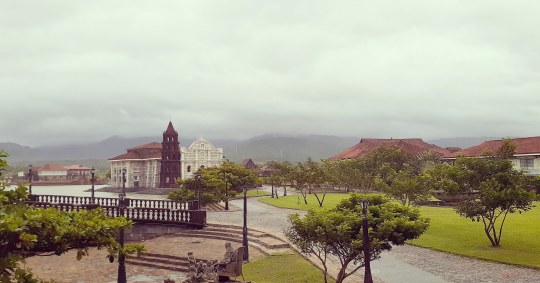
The Province of Baatan is one the most historical places in our country. Aside from being known for the significant historical events like the Death March and Battle of Bataan during World War II, Bataan has also transformed itself as a heritage and cultural hub because of Las Casas Filipinas de Acuzar which is a heritage resort located in Bagac, Bataan.

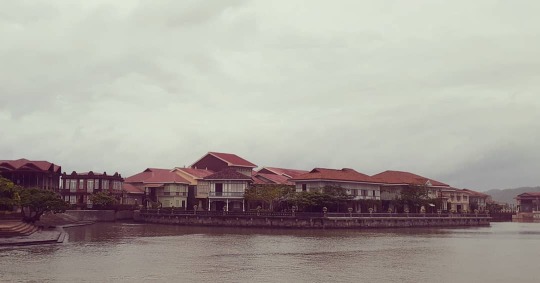
For someone who loves history and architecture, this is a dream come true. I learned about this place from one of my professors in college. I was encouraged when we discussed it in class. I have dreamt of coming here since then. I can’t believe that the “someday” I promised myself finally came. Each heritage houses here were restored and preserved with pieces from its original structure that has kept its secrets alive through time. It is very surreal. Time travelling to 19th Century Philippines was made possible here because of the heritage conservation efforts of Mr. Jose “Gerry” Acuzar by rebuilding the Spanish Colonial Era Heritage Houses and turning it more than just a resort or tourism destination but also a place for learning history and appreciating our rich Filipino culture and heritage.
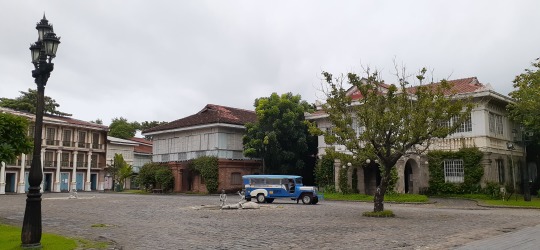
This place has also been a filming site of Heneral Luna, Goyo and Quezon’s Game which is why every corner reminded me of it. It was like walking into the film itself and being part of it. If there is a chance that they will be making the film adaptation of the Historical Fiction, I Love You Since 1892, I can imagine it happening here. This is a perfect setting.
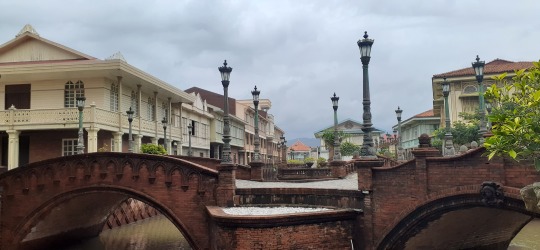
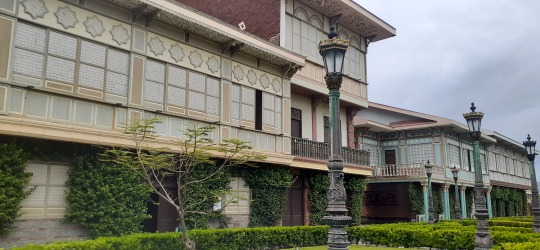
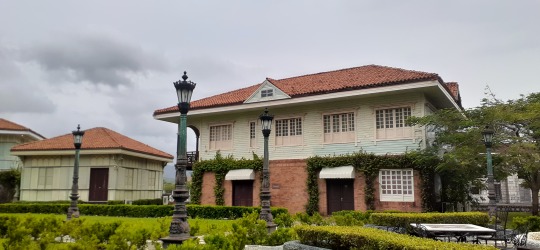
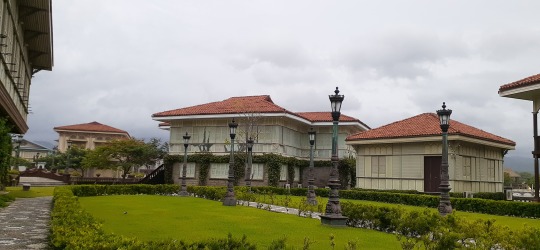
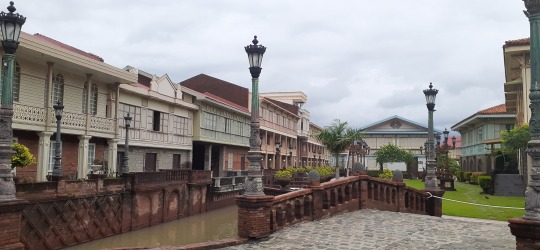
We availed the walking heritage tour inclusive of access inside some of the heritage houses, tour guide, welcome drinks, cold towels and free raincoats if it is raining. I will be sharing some of the highlighted structures and heritage houses at the resort as well as some of the things I learned there.
CASA BINAN
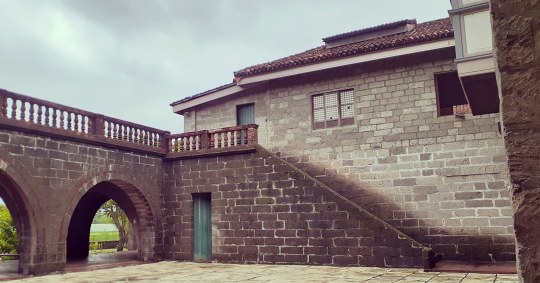
Looks familiar? If you watched Heneral Luna, you will remember that this is the courtyard where Gen. Antonio Luna was betrayed and brutally killed in the film. Casa Binan is a replica of the house where Dona Teodora Alonzo, mother of Jose Rizal grew up and lived. You can also feel that a lot of tragic events happened here. After some time, it came to be known as Alberto Mansion. Its house materials and relics were transferred here to recreate the historic house in Laguna.
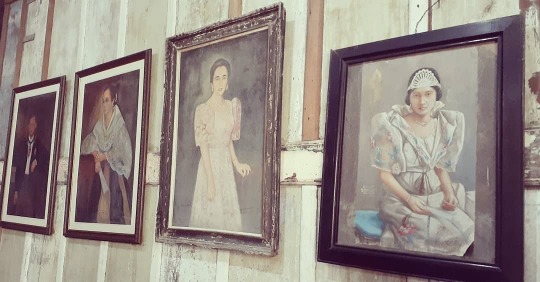
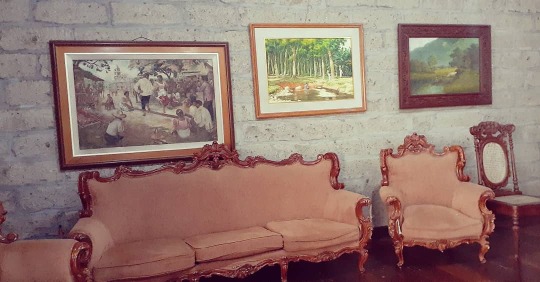


Each houses once have a small fenced space near the window where they can dry their plates after washing them. Also, they have ventanillas below, a window for more ventilation since electricity, electric fan and aircondition weren’t invented yet by then.
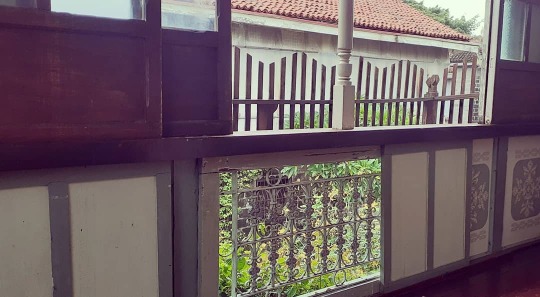
CASA MEXICO
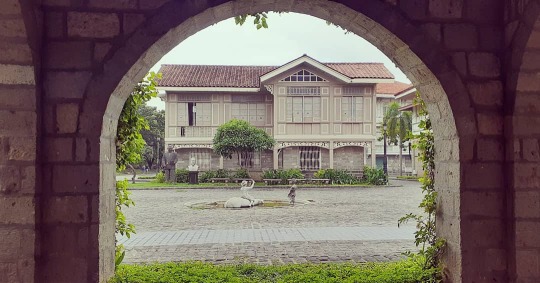
Casa Mexico is a bahay na bato in Mexico, Pampanga. I don’t know why for some reasons, I was attracted to this house. This is my favorite among the ancestral houses at Las Casas. I love its architectural structure and design. According to the story, this house was totally destroyed. However, they were able to save some of its original materials from the junkshop and reconstructed it using old photographs as their guide for its reconstruction. Because of that, it is considered as the “phoenix rising from the ashes”.
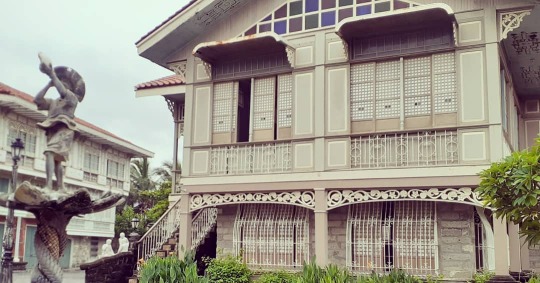
CASA JAEN
Casa Jaen was built in 1901 by Hilarion Santiago. It is called the “White House” because it served as the residence of the first mayor of Jaen. Moreover, it bares the crown-like design called “acroterion” or crown callados which is a status symbol saying that the one who lives in the house is rich and prominent. Despite its grandeur, this house also witnessed a horrifying event. Jose Carlos, also a mayor lived in the house, was attacked. The house was strafted from the outside with the attempt for his assassination because of politics. He eventually surrendered by waving a white cloth. The house still stands with the evidences of the gunshots in the bullet holes that marked the horrifying event.

CASA UNISAN
Casa Unisan was owned by Antonio Maxino from Quezon Province whose entire family was murdered. Only the youngest daughter, Carmen was able to escape and survive with the help of their househelper by hiding her in a bayong for dirty laundry. Casa Unisan currently serves as a restaurant offering different cuisines.

With this story about Carmen and her family, I was reminded of the story of the Romanovs of Russia. The animated film “Anastasia” was inspired by the fall of the Romanov Dynasty. It was believed that only Anastasia Romanov and her grandmother survived with the help of a young boy working in the palace. Although debatable whether Anastasia survived, recent results from the investigation of historians has proven that she too died that night.
PASEO DE ESCOLTA
The Paseo de Escolta is a replica inspired from the old commercial structures of the old business district in Manila famed during the 1900s. Currently, it has souvenir stores on the ground floor while the upper floors served as a hotel for tourists.

CASA BYZANTINA
Casa Byzantina can be originally founds in Binondo, Manila. It is a typical structure of bahay na bato that is built to protect the people from earthquake. Its ground floor is built of stone and bricks while its upper storey are made of various Philippine hard wood. It was lease to tenants after World War II and also became the home to 50 families by 2009. It was later restored and transferred at Las Casas to become a luxurious heritage house accommodating more guests with butler service.

CASA LUNA
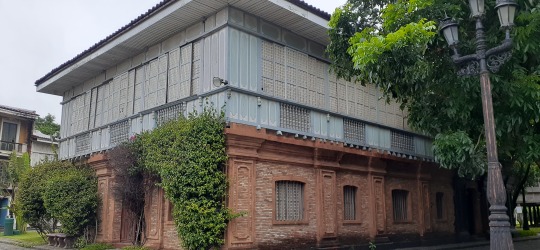
Casa Luna was built in 1850. It is named after the Luna Brothers, Antonio and Juan. It has also witnessed several significant points in our history. It became a venue for gatherings and headquarter of the United States America Forces in the Philippines of the group planning to capture Gen. Yamashita.
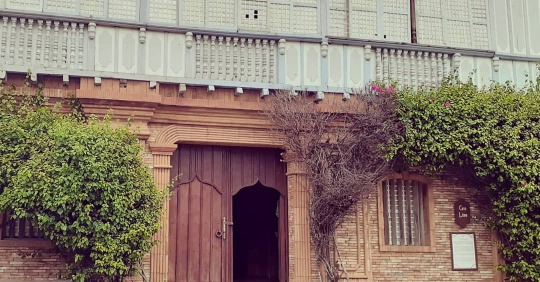
CASA QUIAPO


Casa Quiapo was also known as Casa Hidalgo. It was built in 1867 designed by first Philippine Architect Felix Arroyo. Before it became the first School of Fine Arts of the University of the Philippines, it is where prominent artists like Juan Luna and Felix Hidalgo used to train. The school also gave birth to brilliant artists like Fernando Amorsolo and Guillermo Tolentino.

After some time, it was transferred to Padre Fausta St. where the building housed a bowling alley, abortion clinic, dormitory, and live sex shows. Las Casas have the building blessed to ward of the negativity because of its past. Currently, the building housed the exhibit of Bellas Artes Project.

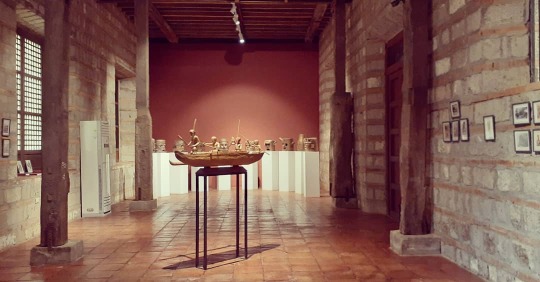
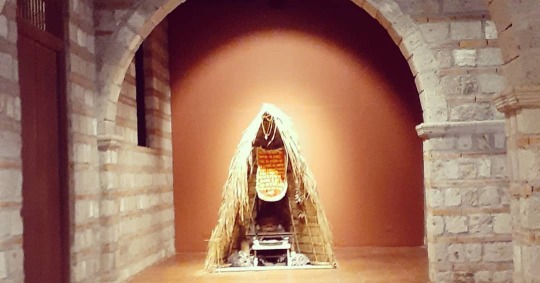
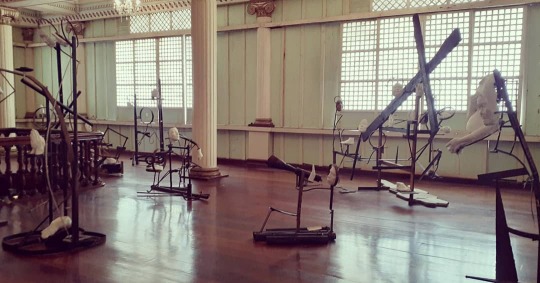

CASA BALIUAG
Casa Baliuag was built in 1898. It is located near Baliuag Church and once served as the municipal hall of Baliuag in 1950s. It has an intricate highly floral motif evident in the wood carvings of the fascade. The lower part of the house became the waiting area for Bulakenos bound for Manila. Because many people stood in front of the houses while waiting for a ride, the owner decided to set up a photo studio and post office business.

TRAMVIA
Before PNR, LRT and PNR, we have tramvias/ streetcar that is steam operated. This is the mode of transportation in various streets of Manila from the late 1800s- mid 1900s. It said that this was once the envy of Asia.
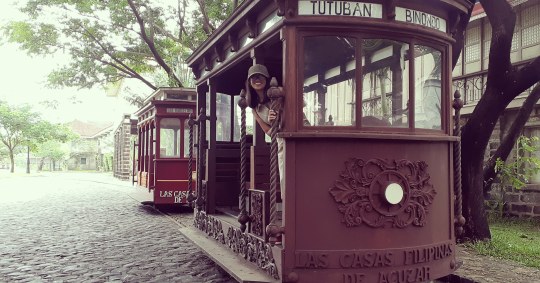
PLAZA DE CASTRO
I was taken by surprise when I saw it in the map and told my friends to see this plaza. I am not even sure if this the one since I suck at reading maps. But I am including this here. I didn’t know we have a plaza here. I feel so entitled and honor to have plaza named after our family. Hahaha joke!
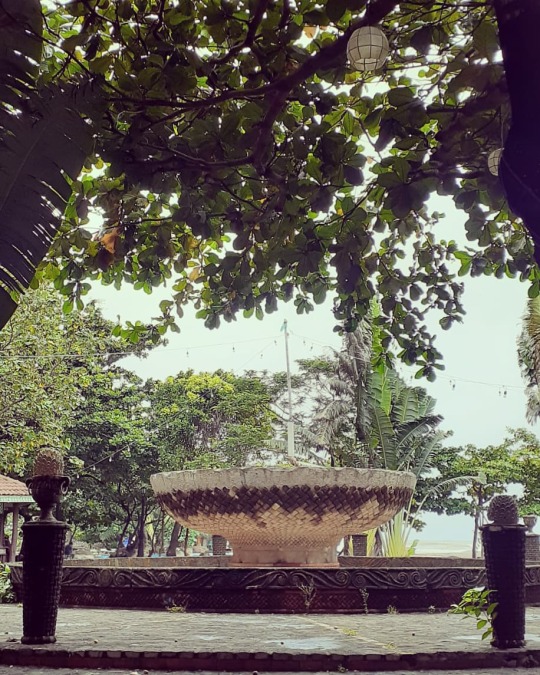
SANTUARIO DE SAN JOSE
This is a replica of Santuario de San Jose, also known as the Balanga Cathedral.
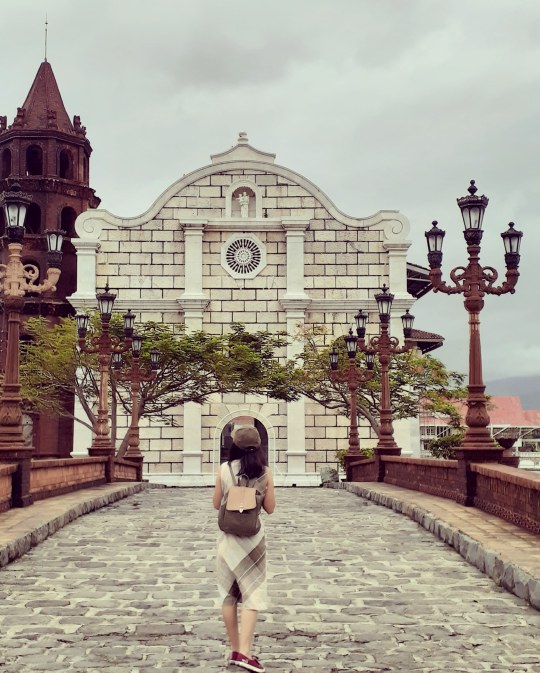
PLAZA MAYOR DE TOBIAS
Of all the stories, I forgot about the explanation for this. It has three women holding different things. I forgot the symbolism in this statue.

LOLA BASYANG
A homage for Lola Basyang’s timeless tales. Lola Basyang became an iconic image of a grandmother gathering her grandchildren for a bedtime story. Her stories became part of the rich local culture of storytelling that has fascinated generations of Filipinos. Lola Basyang is the pen name of Severino Reyes, founder and editor of Liwayway Magazine.
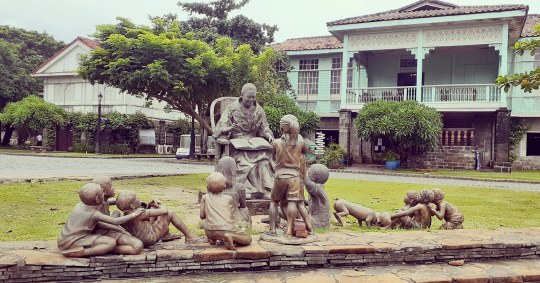
JONES BRIDGE
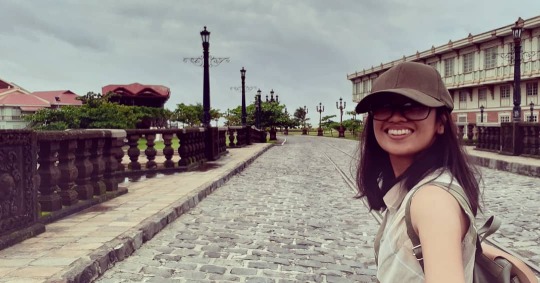
Jones Bridge is just near Lola Basyang’s statue. The Jones bridge is connected to Hotel de Oriente and the other side of the resort with heritage houses. One fascinating detail in this bridge it is that it has statues below of mythical creatures in our Philippine Folklore like tikbalang, engkanto and shokoy.

HOTEL DE ORIENTE
Hotel de Oriente was originally built in 1889 in Binondo, Manila near Binondo Church. It was considered the first premiere luxury hotel in the Philippines. Jose Rizal once stayed at the hotel after arriving from Hong Kong the moment he realizes it was already too late to go home to Calamba, Laguna. During that time, the hotel is also one of the establishments that has a telephone aside from the Malacanang Palace. When the hotel got destroyed at war, it was restored at Las Casas and became a convention center that can hold up to 1,000 people. It is also where the APEC Summit 2015 was held. This hotel holds so much history.

CASA LADRILLO
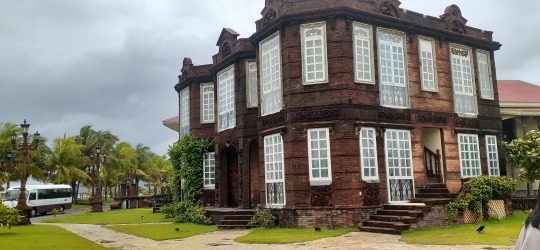
Casa Ladrillo is one of the heritage houses that perfectly captured the European architecture. Also one of my favorites. It serves as one of the resort’s vacation houses. It is said that it got its name from the Spanish term that translate to the word “bricks”.
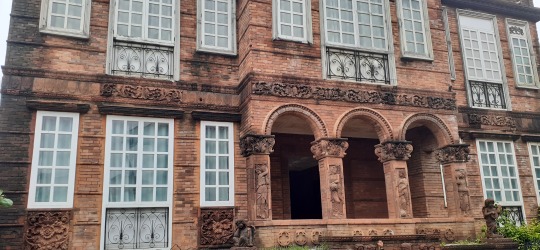
LAMBINGAN BRIDGE
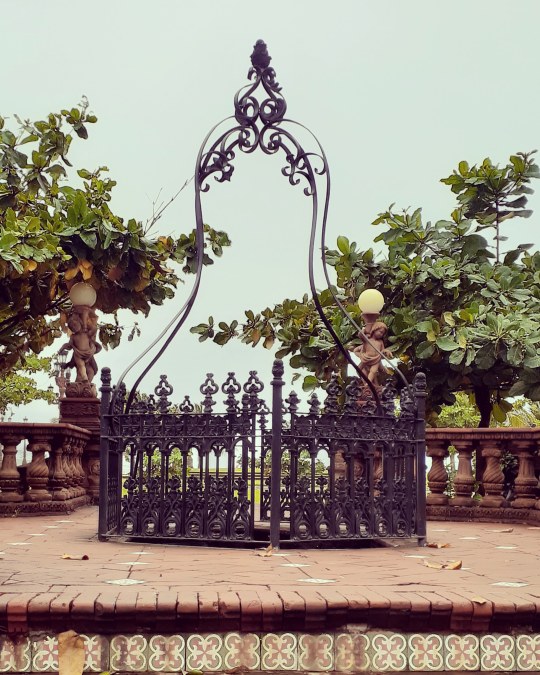
I am not that sure about this one. This is said to be the “lambingan bridge”. When I searched for this, this is what it was called. At the center is like an open well made of steel grills and a romantic place where you can make a wish of the love your hear desires.
ESTERO DE BINONDO
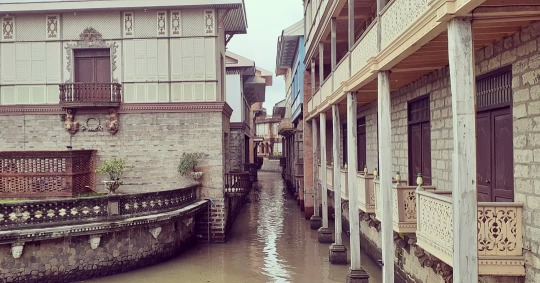
This is the Estero de Binondo. If you will be availing the package for river cruise in a gondola, you’ll be passing by here. It feels like Venice.
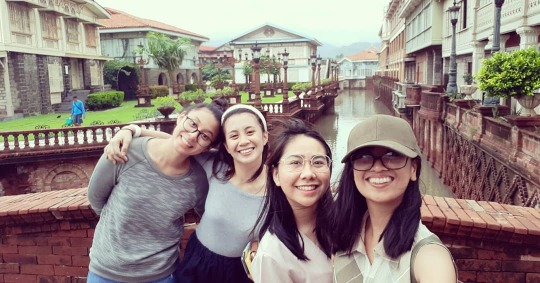
You’ll get to see the beautiful architecture highlighting the verandas. We often get confused with veranda and azotea/ terrace. The azotea is the balcony that can be usually found infront of the house. While verandas can be found at the back of the house.
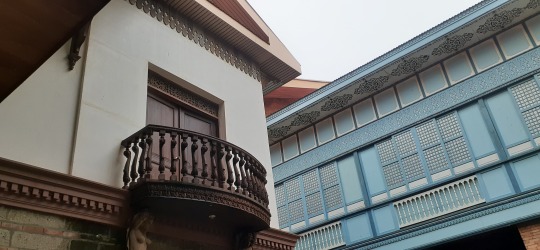
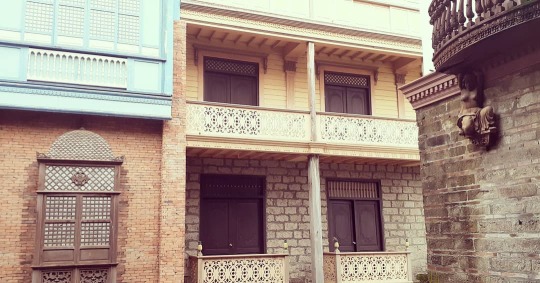

LA PUESTA DEL SOL
Another one that looks familiar? In Quezon’s Game, this street was part of several scenes in the film. This is one of the most notable. In fact, most of the scenes were filmed here at Las Casas. I just really can’t help not to fangirl every time I pass by the structures that would remind me of it. Every corner became part of the historic film.

FRONT BEACH
During summer and when the weather is good, there are inflatables at beach front. Unfortunately, the weather is not that good when we got there. There was a low pressure area so no inflatables. But during summer, it is one of the fun activities here at the resort.

I took photo of this arch instead. Arch of the Centuries? Will it bring me back to 1892? I am having I Love You Since 1892 feels again. This is what happens when you read the book before going to Las Casas. Hahaha
A MILLENNIAL WITH AN OLD SOUL
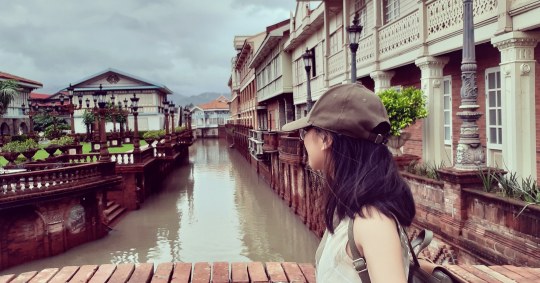
I grew up fascinated with history and architecture. In fact, it is what really urged me to travel to Las Casas. It became part of my bucket list. I was also encouraged by the historical biopic films like Heneral Luna, Goyo and Quezon’s Game. Just recently, I just read the Historical Fiction, “I Love You Since 1892”. I cannot help but remember scenes from the book and imagine it happening here. I feel like I am Carmela Isabella from the 21st Century who accidentally time traveled to 1892 to rewrite the story of Carmelita Montecarlos and Juanito Alfonso.
NOSTALGIC

“Nostalgic. I think that is the best word to describe my experience and how I feel after visiting Las Casas Filipinas de Acuzar. It gives you this longing feeling for the memory you have there. Las Casas is more than a tourism destination or a resort. It is a place for looking back to the grandeur of architecture in 19th Century Philippines. The conservation efforts for each heritage houses has kept its stories and secrets alive after all this time. May we all learn from history and celebrate our rich Filipino culture evident in these structures. For someone who loves history and architecture, this place is a dream come true. I want to go back again someday for new learnings, experiences and memories to long for again. This wraps my Las Casas Story.” –via Instagram @kyna_dc
#mylascasasstory#lascasasfilipinasdeacuzar#wanderlascasas#heritage#history#culture#filipino#architecture#travel#tourism#bataan#philippines#itsmorefuninthephilippines#iloveyousince1892
16 notes
·
View notes
Photo

© Paolo Dala
Oblation Guillermo Tolentino (1935) University of the Philippines (Los Baños, Laguna, Philippines)
Sumablay At Sumablay
I failed Engineering Science 13 (Strength of Materials) three (3) times. I failed Civil Engineering 135 (Steel Design) two (2) times. I failed Civil Engineering 132 (Structural Analysis II) 1 time. Ah forget it, let’s not enumerate because I failed more than ten (10) classes in college. Hahaha... It was a real struggle for me to get this diploma from the University of the Philippines Los Baños’ Civil Engineering Program. This a product of my blood, sweat, and tears, literally.
#Diplom#University of the Philippines#Engineering#Civil Engineering#Oblation#Degree#UPLB#Los Baños#Laguna#Philippines#Guillermo Tolentino#Sculpture
0 notes